The week at a glance
- Black-throated Thrush in Northumberland
- Smaller numbers of summer migrants arrive this week
- Pacific Diver leaves Northumberland
- Blue Rock Thrush apparently departs Gloucestershire
- Netherlands gets its second Moustached Warbler
After an unusually exciting mid-March week last time out, it was no surprise that the pace of arriving migrants dropped in what was at times an unsettled period.
Nevertheless the first Yellow Wagtail of the year flew over Portland, Dorset, on 16th, and a Common Whitethroat was reported singing at Heswall, Cheshire, on 19th. Willow Warblers continued to trickle in among the commoner Chiffchaffs, Northern Wheatears and Little Ringed Plovers, while the odd Ring Ouzel and Osprey also made it through — the latter including the first of the year back at Rutland Water on 17th.

Northern Wheatear, Wallasea Island RSPB, Essex (Photo: Andrew Armstrong)
After a great week last week, Garganey remained prominent, with no fewer than 54 sites logging the species over the seven days, an excellent return for mid-March — has there been a better period to find this species on your local patch in recent years?
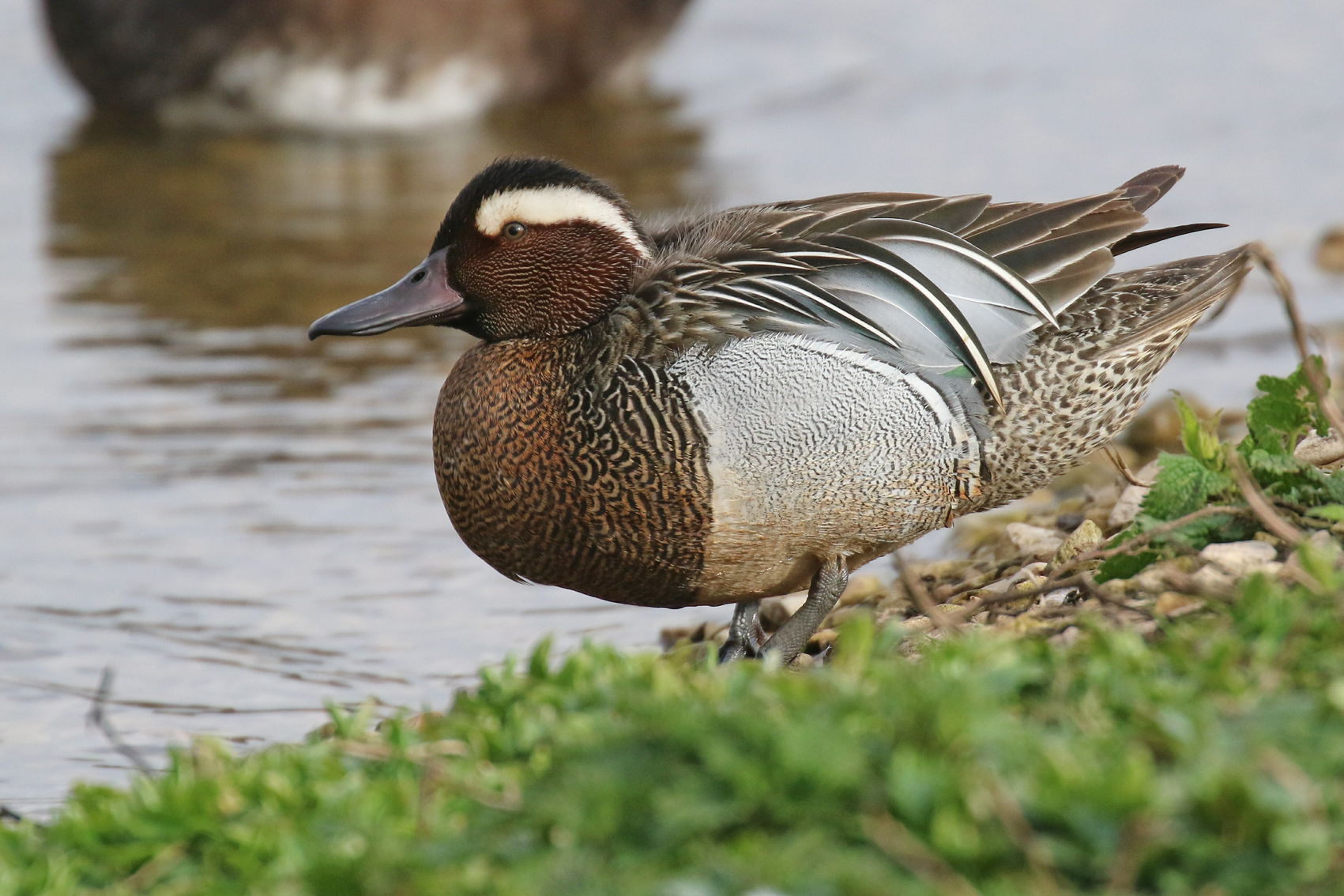
Garganey, Slimbridge WWT, Gloucestershire (Photo: Chris Teague)
In conjunction with this 'slowing' of arrivals, the number of scarcities noted also dropped. However, a fine Alpine Swift found at Baron's Haugh RSPB on 19th gave Clyde (and Scottish) listers ample opportunity to connect with it by lingering to 21st — it's rare for the species to prove so confiding north of the border. The only Hoopoe was a bird at Boswinger, Cornwall, from 16–19th.

Alpine Swift, Baron's Haugh RSPB, Clyde (Photo: Liam Reid)
Hoopoe, Boswinger, Cornwall (Video: Rowena Castillo Nicholls)
The standout find of the week for the second week running was a Black-throated Thrush — this time a male at Prestwick Carr, Northumberland, on 20th. Exhibiting all the traits of a restless spring migrant, it proved mobile throughout the afternoon and was last seen flying off high to the south. Unsurprisingly, it wasn't present the following morning — and there's every chance it's already in Norway by the time you read this.

Black-throated Thrush, Prestwick Carr, Northumberland (Photo: Alan Curry)
The American Royal Tern continued to frequent the coast of Guernsey, and Cleveland's Eastern Black Redstart remained confiding, but genuine highlights were otherwise fairly scant. Just when prospective tickers might be starting to worry, the Blue Rock Thrush appeared to depart its favoured housing estate in Stow-on-the-Wold, Glos, with negative news on 21st. Elsewhere the Killdeer continued on Shetland, and the American Coot was seen again on North Uist.
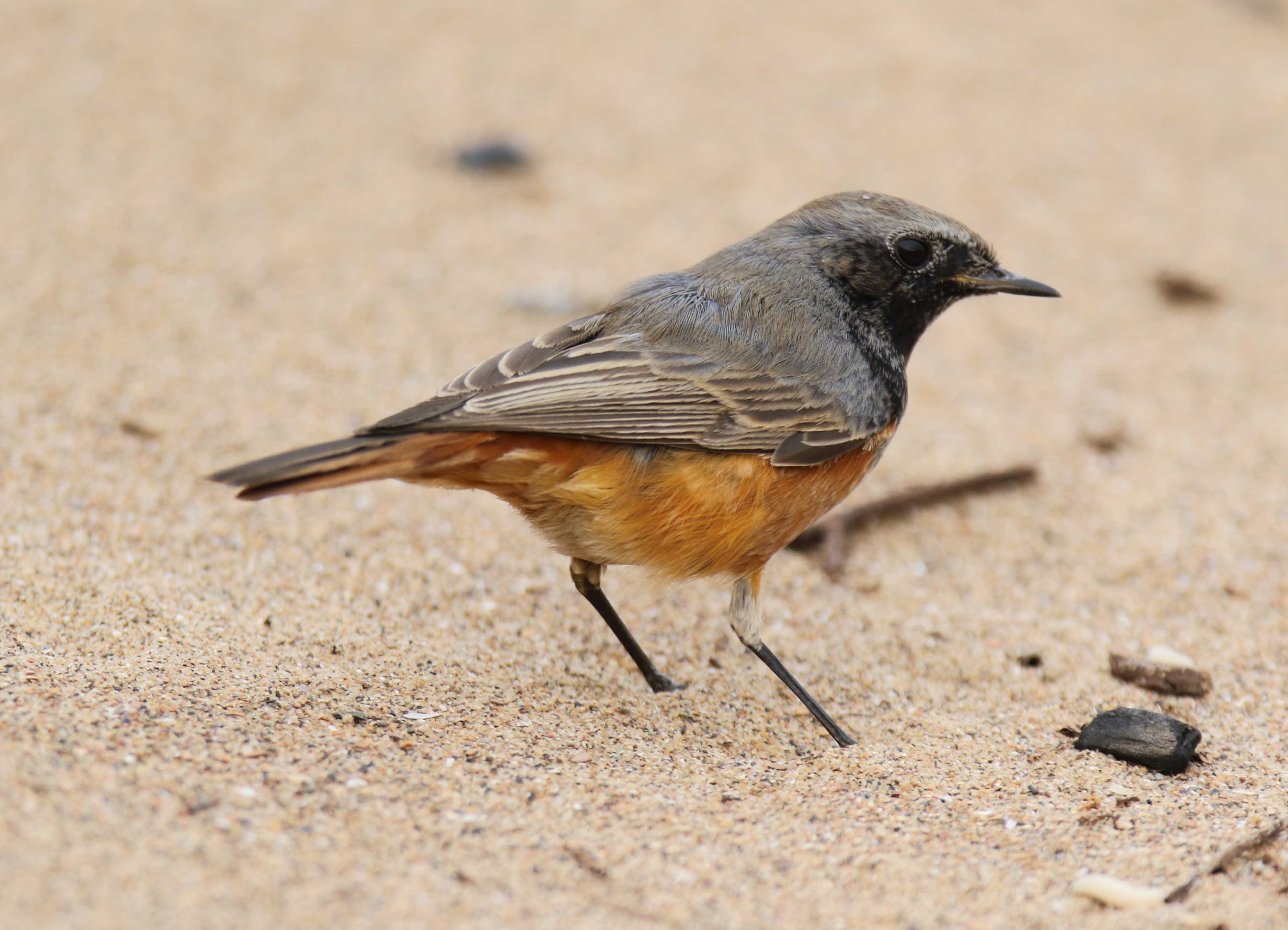
Eastern Black Redstart, Skinningrove, Cleveland (Photo: Mark Leitch)
An amusing series of circumstances unfolded in Northumberland during the week. With no sign of the Pacific Diver at East Chevington on 18th, fears mounted when a brownish-grey corpse was photographed floating in the reeds on North Pool. News was then disseminated that the bird had been found dead ... only to be retracted later in the day when the corpse turned out to be a Greylag Goose! The Pacific Diver hasn't been seen since (there was a report from the Blyth Estuary on 20th, though this turned out to be a Red-throated Diver) and, for all we know, can be presumed alive and well somewhere other than either East Chevington or Druridge!
The drake King Eider was seen again at Ballysadare Bay, Co Sligo, this week, and the female remained off Castlegregory, Co Kerry. A solid five Surf Scoters were off Baltray, Co Louth, on 19th, following three there the previous day, while at least a couple remained off the Lothian coastline and the young drake continued off Man Sands, Devon.
One Lesser Scaup remained — the usual male at Dozmary Pool, Cornwall, on 15th. Seven sites held Ring-necked Ducks, including a new male at Linlithgow Loch, Lothian, on 15th and two males remaining at Knockaderry Lake, Co Waterford. A drake Ferruginous Duck was a new arrival at Northumberland's Gosforth Park, showing well at times from 15th.

Ferruginous Duck, Gosforth Park NR (permit only), Northumberland (Photo: Carl Hewitt)
Worcestershire's American Wigeon moved to Holt from 18th. Others remained at Udale Bay, Highland, Fairlie, Ayrshire, and Dundrum Bay, Co Down. Nine sites registered Green-winged Teal, with a new bird at Cahore, Co Wexford, on 19th. The American Black Duck remained on show at Strontian, Highland, to at least 18th.

Green-winged Teal, Caerlaverock WWT, Dumfries & Galloway (Photo: David Bradshaw)
What is presumably the same wandering blue-morph Snow Goose in Lancashire appeared at Stocks Reservoir on 15th. Two blue morphs were among several hundred Pink-feet at Ardersier, Highland, from 19th. The Todd's Canada Goose was again at Banks Marsh, Lancs, on 15th, with another again at Wexford Wildfowl Reserve and a 'Lesser Canada' reported at New Ferry, Co Antrim, on 20th. Black Brants were in Kent, Norfolk and East Yorkshire.
Fifty sites recorded Cattle Egrets this week; a co-ordinated survey conducted in Cornwall on Sunday revealed 77 birds, including an astonishing 35+ at Frenchman's Creek and 20+ at St Clement; given that several regular sites were not covered, the number in the county was expected to be in excess of 100 individuals. Extrapolate this across the entirety of southern Britain and Ireland, and it's possible that several hundred might be present — surely breeding is likely this year? The usual handful of Glossy Ibises remained at sites across England.
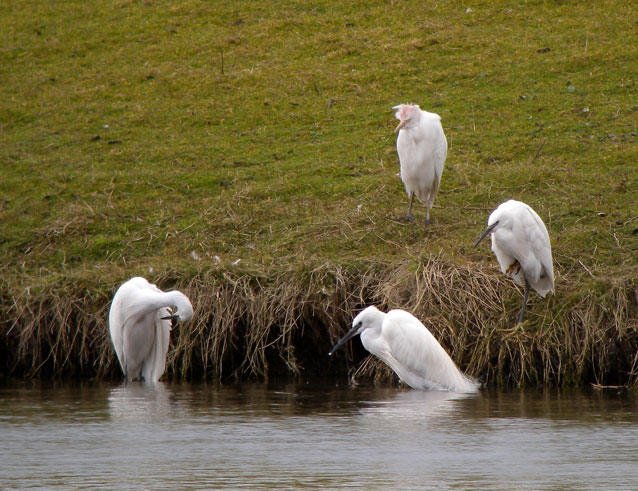
Cattle Egret, Holme Pierrepont, Nottinghamshire (Photo: Lynne Demaine)
An adult White-tailed Eagle over Wykeham, North Yorks, later flew over Bransholme and Hull before being seen at North Creake, Norfolk, on 17th. The Pallid Harrier continued to the roam the New Holkham and North Creake area of Norfolk, while the Northern Harrier was still on North Ronaldsay, Orkney. Also in Orkney, the female Snowy Owl was still on Eday.

Pallid Harrier, New Holkham, Norfolk (Photo: Baz Scampion)
Shorebird-wise, continuing highlights included Dorset's Lesser Yellowlegs and the Long-billed Dowitcher at Tacumshin, Co Wexford. Meanwhile the Temminck's Stint was back at Branston Gravel Pits, Staffs, on 21st.
Bonaparte's Gulls remained at Kenmare, Co Kerry, to 16th and Helston, Cornwall, all week. There has evidently been a big clear-out of gulls, and Ring-billed Gulls were noted at just six sites. This included four still at Tralee, Co Kerry, a brief adult Martin Mere, Lancs, on 19th and a first-winter at Bann Estuary, Co Londonderry, on 15th. Caspian Gull remains a rare beast in Wales and a first-winter at Llanrhystud, Ceredigion, on 19th was an excellent find.

Bonaparte's Gull, Kenmare, Kerry (Photo: Caleb Knight)

Ring-billed Gull, Martin Mere WWT, Lancashire (Photo: Eddie Seal)
The Hume's Leaf Warbler was still on show at Portland, Dorset, this week but Yellow-browed Warblers were logged at just four sites, including two continuing birds at Swanpool, Cornwall. Another favourite of recent weeks, the Lincolnshire Bluethroat, was still at Willow Tree Fen throughout and is really beginning to colour up now.
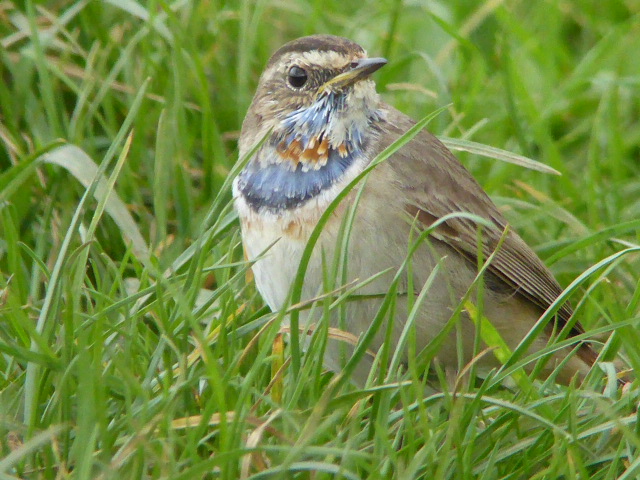
Bluethroat, Willow Tree Fen LWT, Lincolnshire (Photo: Dave Roberts)
Other lingering stars from the winter included the Rose-coloured Starling in Crawley, W Sussex, and the Little Bunting at Great Barford, Beds. Last but not least, a Hornemann's Arctic Redpoll was photographed on Lewis, Outer Hebrides, on 17th, while a Coues's Arctic Redpoll visited a garden in Cockley Cley, Norfolk, on 20th.

Coues' Arctic Redpoll, Cockley Cley, Norfolk (Photo: Ashley Banwell)

Hornemann's Arctic Redpoll, Lional, Lewis, Outer Hebrides (Photo: Sam Hawkins)
Western Palearctic news
A singing male Moustached Warbler at De Biesbosch, Netherlands, was the stand-out discovery in a fairly quiet week around the region. Just the second national record, it follows hot on the heels of the country's first, seen in April 2016. Also in the area, the Blyth's Pipit remained all week.
Moustached Warbler song, Netherlands (Video: Luuk Punt)
The moth-eaten White-throated Bee-eater continued near Dakhla, Western Sahara, and birders were still seeing Sudan Golden Sparrows and Golden Nightjars along the Aousserd Road, with at least three Cape Gulls still near Afkhenir. Lesser Scaup isn't a species you'd expect to find in the Sahara, yet one was at a reservoir near Ouarzazate, Morocco, 18th.
An African Desert Warbler on Sal represents just the third record for Cape Verde. Cyprus' second Oriental Turtle Dove was at Mandria on 19th, while a Sociable Lapwing was in Catalonia, Spain, and Norway claimed an American Black Duck and a couple of Pine Buntings. An American Wigeon at Ktery, Lódz, represents just the sixth for Poland, while the long-staying American White-winged Scoter was still at Keflavik, Iceland, on 15th.

African Desert Warbler, Cape Verde (Photo: Kirsten Fairweather)
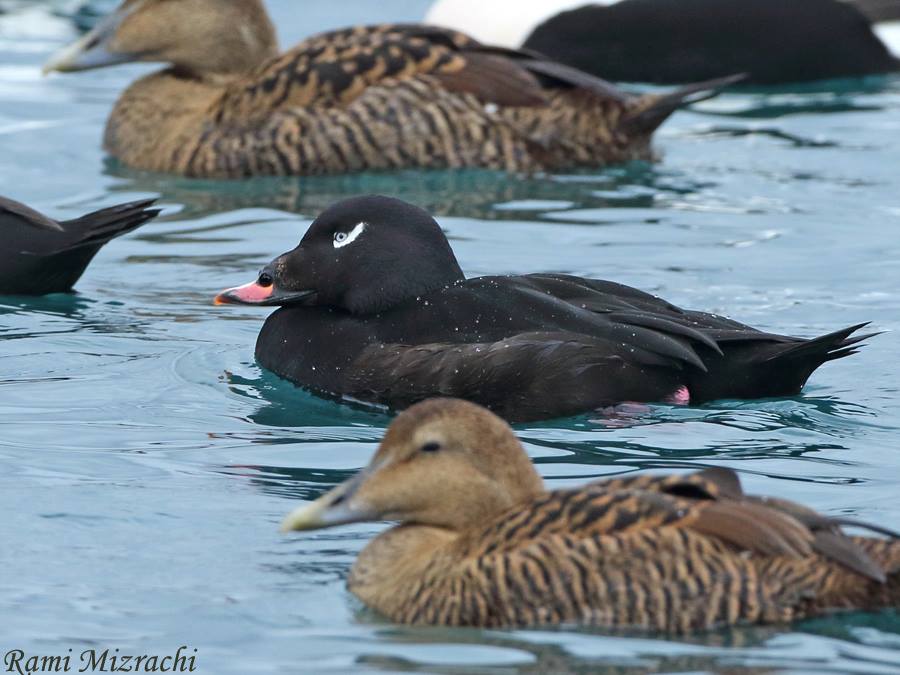
American White-winged Scoter, Iceland (Photo: Rami Mizrachi)


